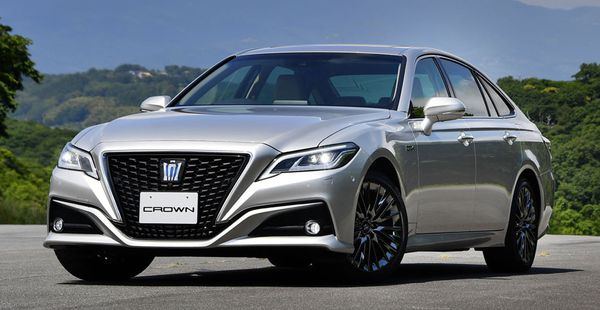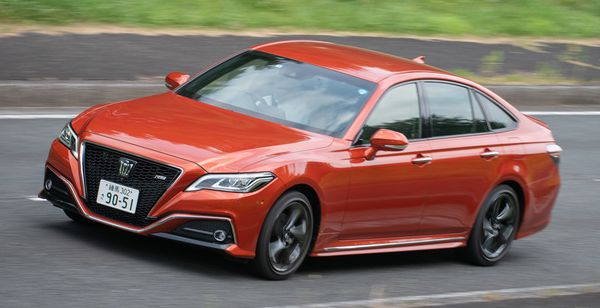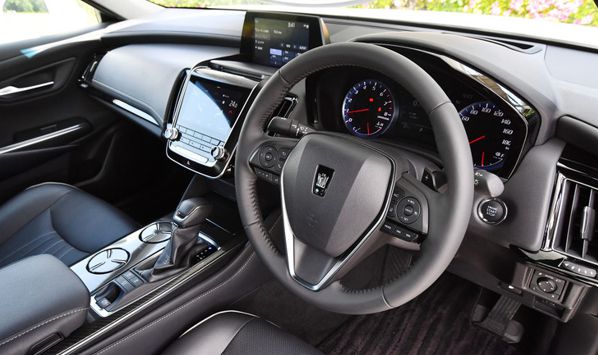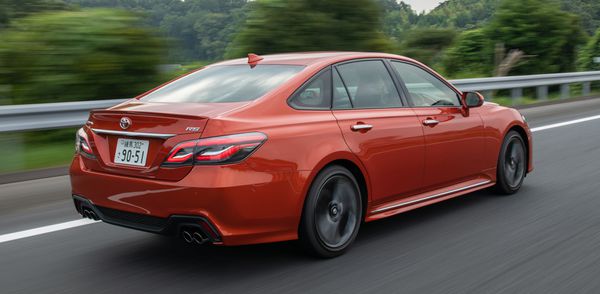Published
on 30
Sep 2021
|
All rights reserved.
|
|
|

|
|
The
15th generation Crown is also likely to be the last generation.
|
|
This
is the 15th generation Crown, also likely to be the last generation,
unfortunately. The Crown was born in 1955, older than Ford Mustang,
older than Porsche 911, older than Mini. It was also Japan’s best
selling saloon for many years. Total production is around 5.5 million
units, with sales peaked in 1990 at over 200,000 units. However, since
then it started a long and steady decline. By 2018, it dropped to
50,000 cars, then 36,000 cars in 2019 and only 22,000 cars last year.
Obviously, such a low volume does not justify its existence. If a
report by a Japanese newspaper last November was true, Toyota will stop
producing it next year. The nameplate might be used by a new SUV, but
then it would be a completely different story.
Sales bounded in Japan, where it faces the competition of European
import as well as Toyota’s own Lexus, its fall is predictable. Toyota
knows what its problem is: only old people buy it. When Ford killed its
Lincoln Town Car nameplate, its buyers averaged 67 years old. The Crown
is slightly better at 66 – although Japanese tend to live longer – way
too old to warrant a future. As these loyal customers die off, so will
the car. In fact, Toyota realized this 20 years ago. As early as the
11th generation born in 1999, it derived the car into 3 versions:
Athlete, Royal and Majesta, with different looks and specs to widen its
customer portfolio. While that might slow down its decline, it failed
to turnaround its fortune. Coming to the latest 15th generation, the
intent to attract younger customers is even more obvious. Now there is
no longer Athlete, Royal and Majesta, but only one version that is
always sporty, comparatively. On the top of it, you may opt for RS
trim, which adds
spoilers, 18-inch alloy wheels, thicker anti-roll bar and AVS adaptive
dampers. Toyota even took it to Nurburgring to improve its handling,
something not even its Lexus cousin enjoyed.

|
|
Now
there is no longer Athlete, Royal and Majesta, but only one version
that is always sporty, comparatively.
|
|
While I don’t think the new styling can really lure young customers
from European import, at least it doesn’t look as conservative as
before. Up front, it sports a grille so massive that makes Audi’s
single-frame grille a bit tamed. It might not suit everyone’s taste,
but at least not as outrageous as the crown shape item of the last
generation. Bigger changes can be found at the back, where it has
abandoned traditional 3-box proportion for a semi-fastback design. This
also necessitates the addition of a rear quarter window before the
slimmer C-pillar, resulting in a lighter perception and a brighter rear
cabin. Nevertheless, in order to make it more maneuverable in Japan’s
urban area, Toyota resists to widen its shoulders beyond 1800mm.
Otherwise, it would have looked sportier and better proportioned.
Inside, the cabin remains a roomy and comfortable place for four, if
not the fitth passenger due to limited shoulder room. Materials and
equipment are not quite as upmarket as the level of Mercedes, BMW, Audi
or Lexus. It still employs analogue gauges at a time rivals have
switched to TFT screens. The center console employs an 8-inch display
at the top and a 7-inch touchscreen at lower level for controlling
infotainment, which is unnecessary and outdated. Fortunately, in late
2020 this was replaced with a single, 12.3-inch touchscreen, below
which there
are 2 sets of physical switches for individual climate controls for the
driver and front passenger.

|
|
A
comfortable place, but not as upmarket as Mercedes, BMW, Audi and Lexus.
|
|
The Mk15 is built on Toyota’s large global rear-drive platform called
GA-L, which is used also by Lexus LS and LC. However, it is made
shorter and
narrower to fit Japanese streets. This platform uses more high-strength
steel to improve rigidity by 50 percent, while front suspension tower
brackets, front fenders and bonnet are made of aluminum to cut weight,
improve balance
and lower center of gravity by 10mm. Still, weighing between 1730 and
1900 kg, it is heavier than the equivalent BMW 5-Series, which uses
even more aluminum.
There are 3 choices of engines, 2 of them are hybrid, predictably. The
best-selling model is 2.5G, whose hybrid powertrain comes from Camry
and Lexus ES300h but turned to mount longitudinally. It combines a
“Dynamic Force” four-cylinder Atkinson-cycle engine with 2 electric
motors
and planetary CVT for 226 horsepower. A NiMH battery is placed at the
boot, cutting its volume to 431 liters. This car is no fireball, of
course, but its power delivery is smooth and engine noise is well
insulated from the cabin. Outstanding fuel economy is a strong selling
point.
At the other exteme is the range-topping 3.5G, whose powertrain is
shared with LS500h and LC500h. This combines a 3.5-liter V6 with two
motors and a “Multistage CVT” which supplements a conventional
planetary CVT with a 4-speed automatic to enable 10 speeds. Combined
output is 359 horsepower, should have been able to propel the car to 60
mph in 5 seconds if not limited by its narrow tires and lack of 4WD. In
practice, the Multistage CVT works very well,
shifts unobtrusively and has rubberband effect banished.
 |
|
RS
Turbo is not meant to be Rennsport Turbo, but it adds a little bit more
control and engagement to a chassis otherwise majored on comfort and
refinement.
|
|
However, these are old people’s powertrains. Younger drivers should opt
for 2.0 RS Turbo, whose 245 hp output offers adequate performance while
lighter weight makes the handling more lively. You may opt for RS trim
on any engines, but its sportier character fits the 2-liter turbo most.
Make no mistake, the Crown has never and will never be a sports sedan.
The RS Turbo is not meant to be Rennsport Turbo either, but it adds a
little bit more control and engagement to a chassis otherwise majored
on comfort and refinement. All Crown models feel solid in chassis, thus
their suspensions soak up bumps effectively, especially at lower
speeds, which is a sharp contrast to the stiff-legged Lexus LS.
Cruising refinement is high, too, thanks to good sound insulation as
well as active noise cancellation system. The RS displays better roll
control without sacrificing much comfort. It never feels floaty or
bouncy.
Unfortunately, all these efforts are too late and too little. While
Crown has dominated its local market for a long time and outlasted its
arch-rival Nissan Cedric / Gloria, the overall market for large
executive saloons has shrunken a lot in the same period. Toyota should
have merged Crown and Lexus GS into one car. Hesitating to do so, it
loses both.
|
Verdict:   
|
|